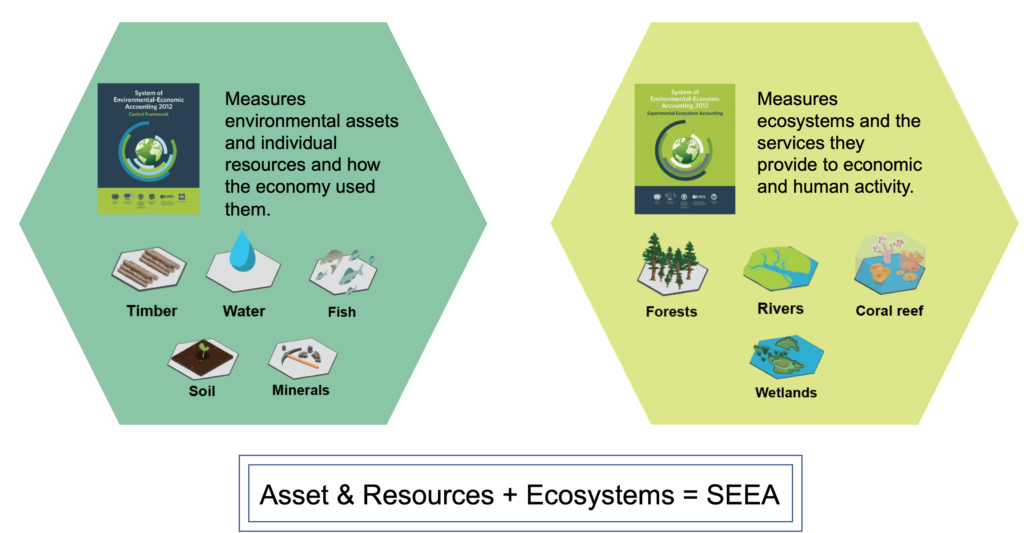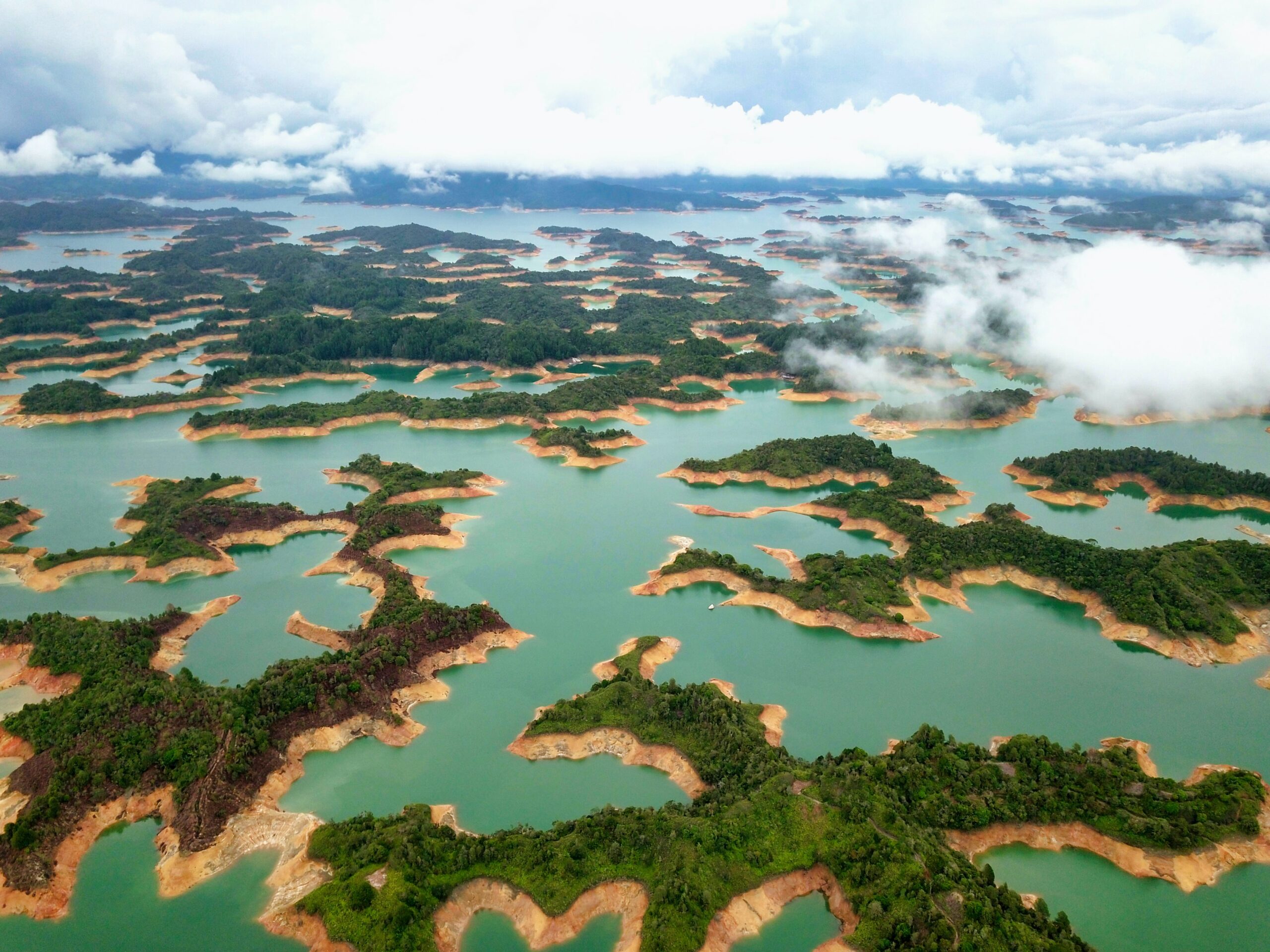
The demand for measures that move “beyond GDP” to encompass environmental and social aspects is not new. Even before the Rio 1992 Earth Summit, policymakers, economists and leaders across the world have been calling for a measure that more accurately describes the wealth of nations – as opposed to a narrow view of only their income and financial assets. This sentiment became a plan of action with the adoption of the 2030 Agenda for Sustainable Development and the associated Sustainable Development Goals indicators and most recently was echoed in the recent Dasgupta Review on the economics of biodiversity.
The adoption as an international statistical standard of the System of Environmental-Economic Accounting (SEEA) Ecosystem Accounting in March 2021 by the United Nations Statistical Commission, represents the first step taken at the UN level to recognise the immense value of nature in economic planning, decision-making and reporting.
It is a significant milestone in the move towards more inclusive and comprehensive measures of wealth that include the value of natural capital. Recognizing and responding to this, the UN Secretary General, António Guterres observed:
“The adoption of this economic and environmental framework is a historic step towards transforming the way we view and value nature. … We must reflect nature’s true value in all our policies, plans and economic systems. The rewards will be immense.”
UN Chief Economist, Elliott Harris also highlighted the relevance and need for ecosystem accounting, and the significance of having a statistical standard and reinforced that going beyond GDP and recognising the importance of nature to people and society will be fundamental in the years ahead.

What is the SEEA?
The SEEA provides a statistical framework for the measurement of the relationship between the environment and the economy through the description of relevant concepts, definitions and measurement boundaries. It has an equivalent role to statistical standards used for the measurement of the economy, population, prices and employment. Consequently, the measurement of ecosystems, ecosystem services and other environmental stocks and flows is an integral part of official statistics.
The SEEA is described in two volumes: the SEEA Central Framework (adopted as a standard in 2012) and the SEEA Ecosystem Accounting. Together they provide an integrated and comprehensive statistical framework for recording environmental flows (water, energy, waste, emissions); natural resources (minerals, timber, fish, land); environmental transactions (taxes, subsidies, restoration expenditure); and ecosystems and their services.

The SEEA Ecosystem Accounting itself establishes standard concepts and definitions for measuring ecosystem extent (size), ecosystem condition (quality/health) and flows of ecosystem services and describes internationally recognised principles and recommendations for the valuation of ecosystem services and ecosystem assets.
The draft adopted by the Statistical Commission will be published later this year as a joint release by the UN and other international agencies including the European Commission, IMF, OECD, FAO and World Bank.
Critical features of the standard
Two aspects of the adoption of the SEEA Ecosystem Accounting are critical. First, its adoption by the UN Statistical Commission implies that all countries have signed off on the standard and are now encourage it to implement it. Indeed, many of the leaders in the SEEA are countries with statistical systems that generally have lower levels of resourcing but higher levels of dependency on, and connection to, natural capital. As an international standard, the SEEA provides a focal point for integrating data from different sources, a common language for the exchange of experience, and clear definitions for the comparison of results. In turn, these features provide a foundation for decision makers seeking well-accepted and robust data consistent with economic data to inform decision making.
Second, the long and open process for the development of SEEA Ecosystem Accounting has brought together experts from many disciplines including geography, ecology, economics, statistics and accounting. None of these disciplines on its own can provide a complete reflection of the issues, but collectively their respective insights are incredibly powerful. The SEEA Ecosystem Accounting has aimed to harness the richness of this existing knowledge and its adoption establishes a new benchmark for interdisciplinary work.
Implementing and using the standard
The concepts, definitions, classifications and treatments described in the SEEA Ecosystem Accounting provide the basis for compiling spatially rich, coherent data to underpin decision making at all scales. The underpinning logic is that investment in, or degradation of, natural capital will affect the capacity of each ecosystem to provide the services on which we, and future generations, depend.
Currently, decisions concerning our use of the environment are made based on incomplete, insufficient or siloed information, effectively placing blinkers or blindfolds on decision-makers. The SEEA Ecosystem Accounting extends our field of vision and broadens the traditional accounting focus on financial transactions by:
- Integrating information on ecosystem services (such as biomass provision, air filtration, climate regulation, recreation and amenity related services); and
- Embedding consideration of the changing extent and condition of ecosystems and their biodiversity – our natural capital – in the description of the balance sheet.
By way of example, a set of ecosystem accounts for a forest manager will assist in understanding and communicating:
- How the size and composition of the forest estate has changed;
- To what extent the condition of the forest’s ecosystems has changed in response to management actions – for example in terms of canopy cover, understory, soil quality and species richness;
- How the bundle of ecosystem services provided by the forest contributes to different users including the forest manager and surrounding communities, for example in terms of timber, air filtration, water regulation, recreation and visual amenity services; and
- Whether the capacity for the ecosystem to supply ecosystem services in the future has been enhanced or degraded.
The accounting-based framing of the SEEA for natural capital also provides a connection to the measurement of human and social capital using accounting principles and to further consideration of the distribution of capitals and their services and benefits across society. For example, analysis may focus on the dependencies of particular population groups or communities on ecosystem services such as crop provisioning, flood control and soil erosion control; and the role of investing in human and social capital through awareness and education as a response to achieving natural capital outcomes. This integration is the next step in the journey beyond GDP, as highlighted in the Capitals Coalition’s Principles of Integrated Capitals Assessments.
According to the Global Assessment of Environmental Economic Accounting and Supporting Statistics, since the SEEA Experimental Ecosystem Accounting was released in 2013, 34 countries have undertaken work on ecosystem accounting to advance the concepts, methods and their application. Leading countries include Australia, Brazil, Canada, China, Estonia, India, Ireland, Mexico, Netherlands, Norway, Philippines, South Africa, Uganda, United Kingdom and the United States. In addition, the ecosystem accounting framework is being applied at sub-national level and across private and public sectors. The latest report from the Capitals Coalition, Natural Capital for Biodiversity Policy: What, Why & How?, features examples of best practice from governments around the world applying a capitals approach to safeguard biodiversity, including examples of innovative ecosystem accounting.
An implementation strategy to support the roll-out of SEEA EA in countries is currently being developed. The strategy encompasses the development of guidelines (with draft guidelines on biophysical modelling and valuation already well advanced) and the development of e-learning and capacity building programmes. The strategy also incorporates development of an integrated, open-source modelling platform, ARIES for SEEA, which will allow users to produce initial standardized scalable and customizable ecosystem accounts for an area of interest, with the longer-term objective of improving the initial estimates with national and local datasets.
The adoption of the SEEA EA presents also an opportunity for the use of the SEEA at the business level, moving towards alignment between the SEEA and business accounting and reporting and fostering closer collaboration between national statistical offices and the private sector.
Beyond GDP
The next steps are wide-ranging. There are, of course, ecosystem accounts to be compiled but there are also connections to be developed in the use of technology; in the integration of data (both at local and global scales); in the alignment of classifications and definitions; in the use of SEEA principles in capitals assessments in the private sector; and in the ongoing process of embedding natural capital in decision making across all sectors. Work is also underway on describing the use of SEEA principles in accounting for biodiversity, oceans and urban areas.
The journey beyond GDP will have many more milestones in the future. But the adoption of the SEEA framework represents the biggest step forwards so far, upon which a new generation of accounting – one that includes the value of nature, people and society – may evolve.
Carl Obst is Director of IDEEA Group & Alessandra Alfieri is the Chief of Environmental-Economic Accounting at UN Statistics Division.
Carl Obst has been a leading player in the development of the SEEA, as the lead author and editor of the SEEA Central Framework and SEEA Ecosystem Accounting and as a key co-ordinator of the technical inputs from over 600 experts from around the world and across many disciplines. IDEEA Group has developed processes and tools to drive the implementation of the concepts and principles of the SEEA and to advance natural capital accounting at national, catchment and business scales.
Alessandra Alfieri has been leading work on the SEEA at the UN for over 25 years. She has been leading the methodological development of the SEEA as well as capacity building and adoption and implementation in countries. She is the Secretary of the United Nations Committee of Experts on Environmental Economic Accounting, an intergovernmental process established by the United Nations Statistical Commission to provide vision and direction to environmental economic accounting.












